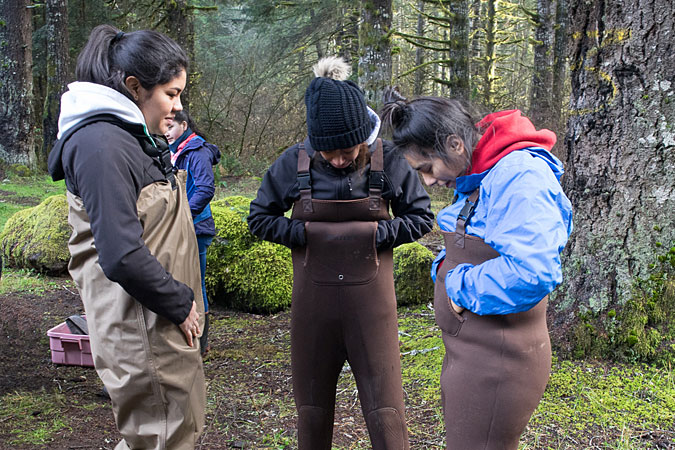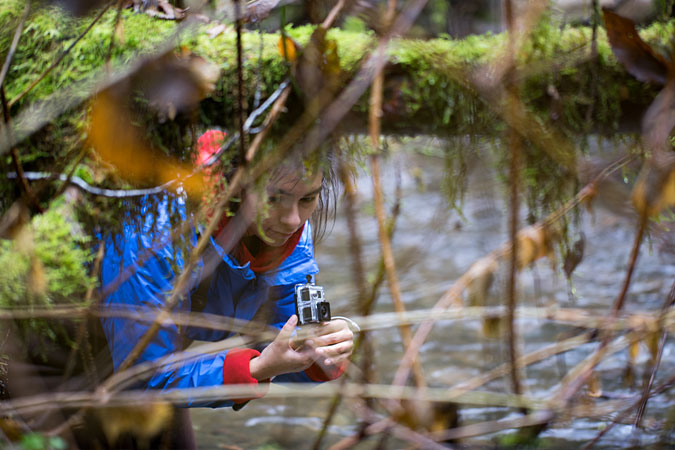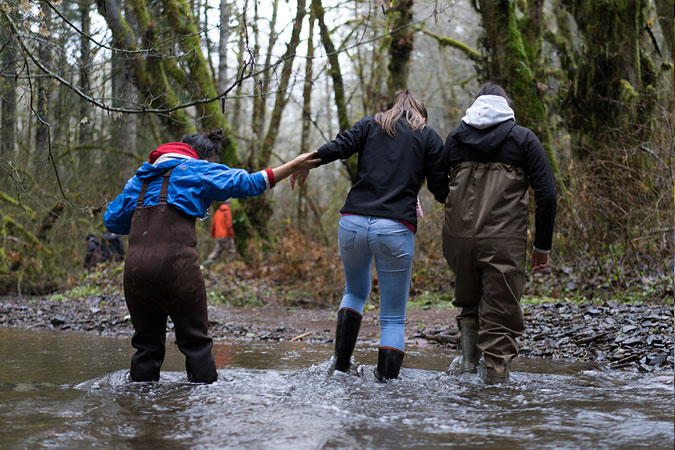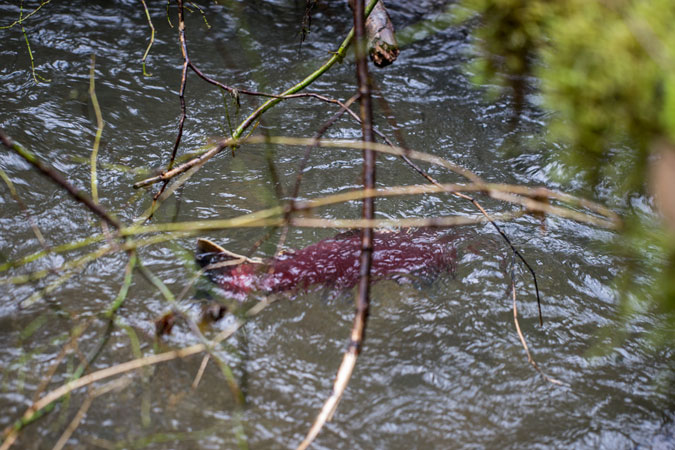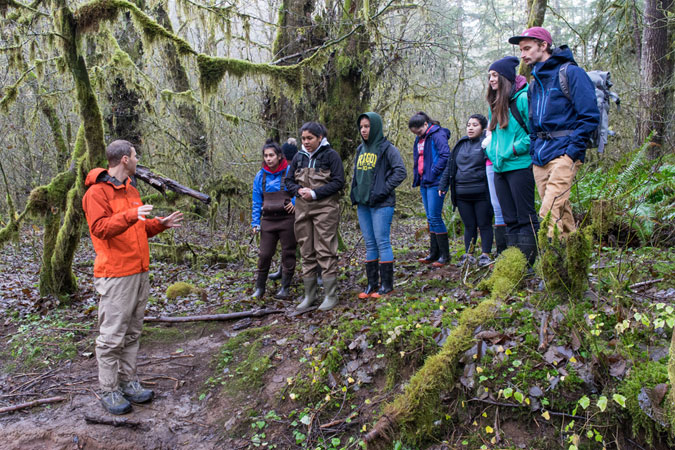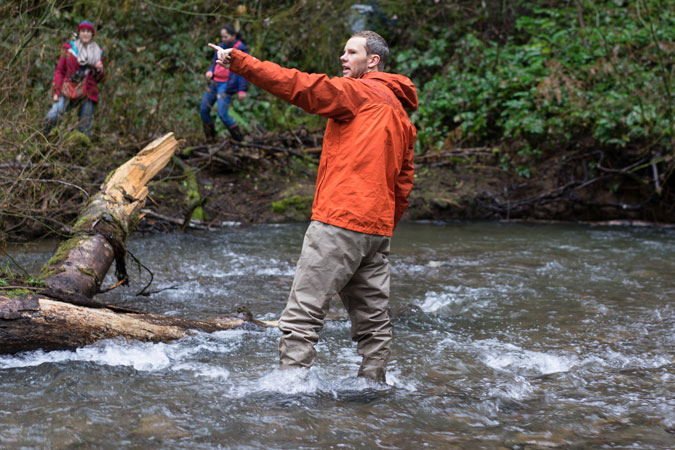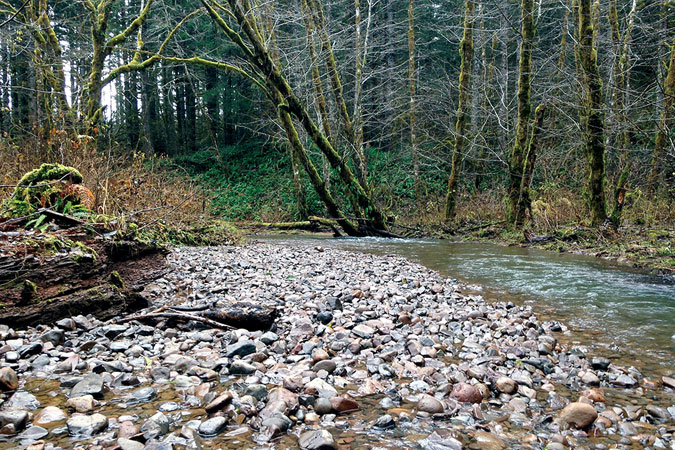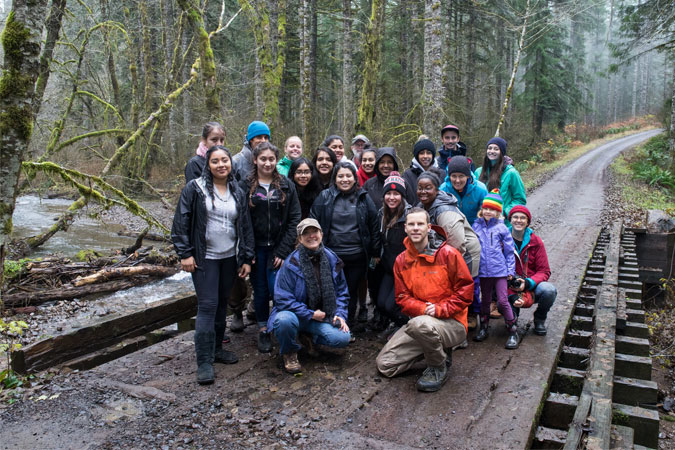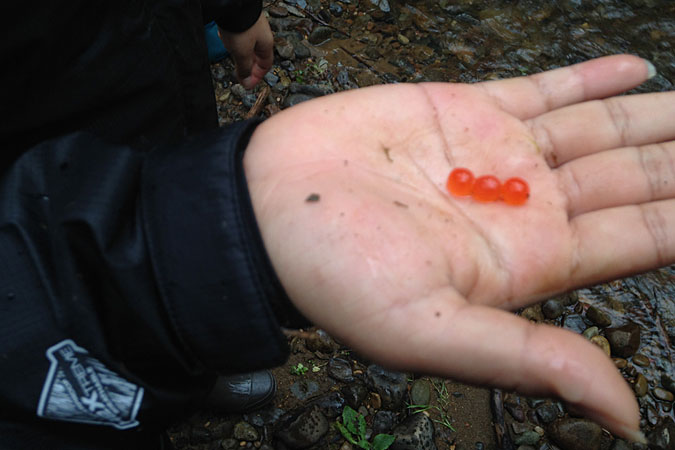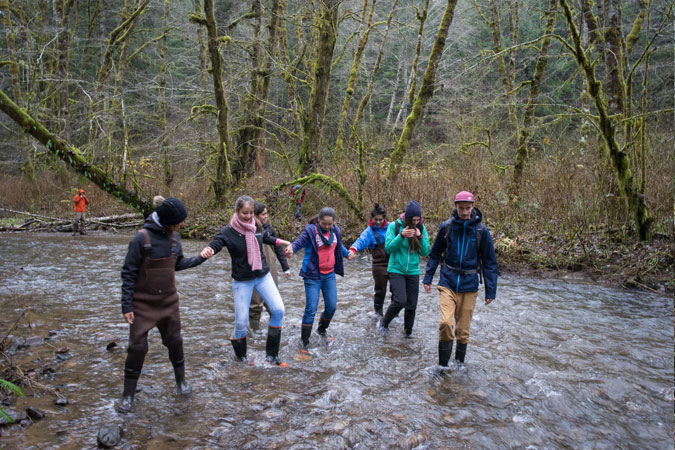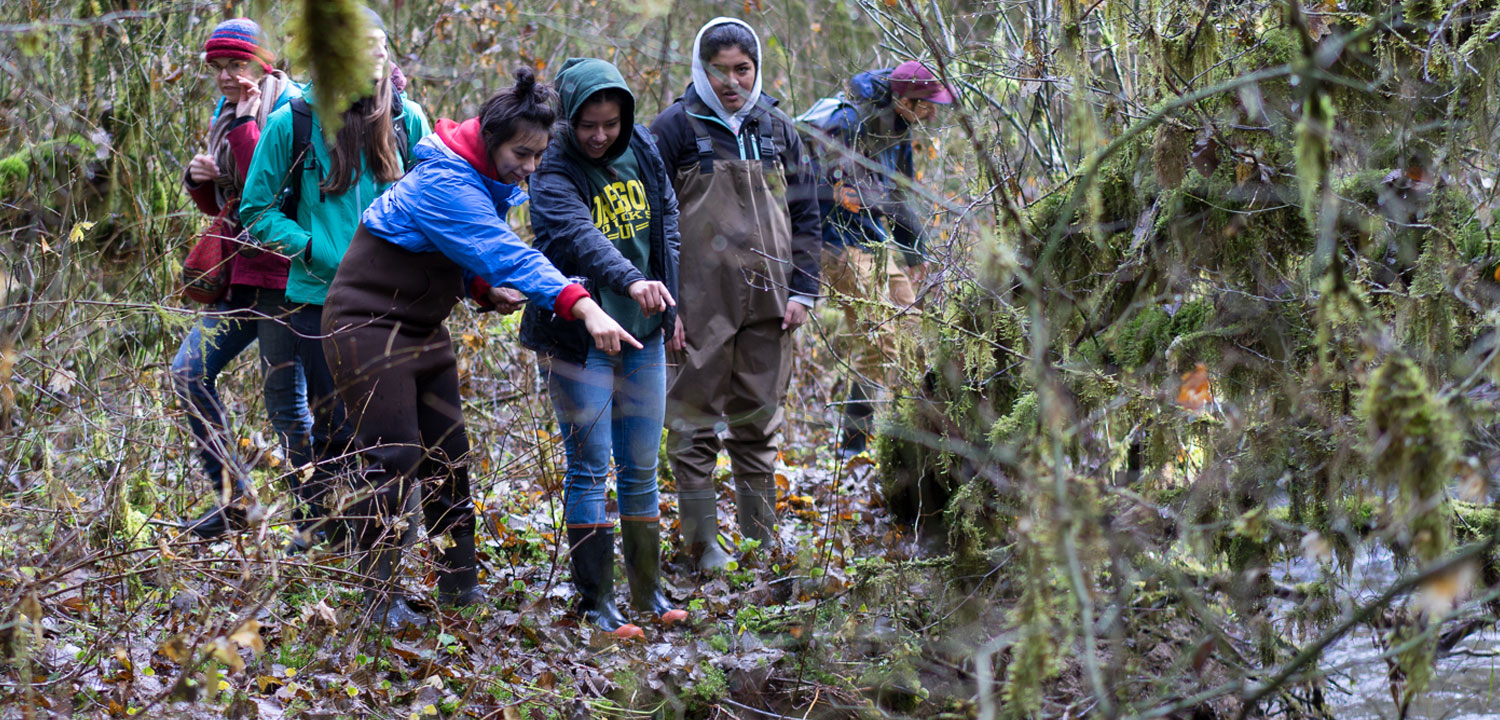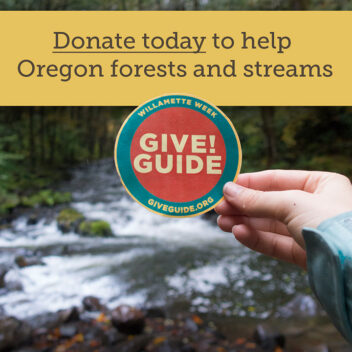Teens and fish-lovers come together in Oregon’s Tillamook Forest in search of spawning coho.
On a chilly December Saturday—in typical rainy-Northwest fashion—two vans packed to capacity with teenage girls, volunteers, and gear headed west to Oregon’s Tillamook Forest, brimming with anticipation: we were hoping to see wild coho finish their annual pilgrimage to spawn.
In the caravan were 12 teenage girls and two guides from the nonprofit Adelante Mujeres and four staff from the North Coast State Forest Coalition and founding coalition member Wild Salmon Center.
Today, they were entering one of region’s hidden gems: the 500,000-acre Tillamook, nestled between greater Portland and the Pacific Ocean and home to six rivers—the Trask, Wilson, Kilchis, Miami, Nehalem, and Salmonberry— that host extraordinary runs of wild fall Chinook and winter steelhead, as well as spring Chinook, coho, chum, and rainbow and sea-run cutthroat trout. For a number of the girls, this was their first time exploring these public lands and their first opportunity to catch a glimpse of a wild salmon.
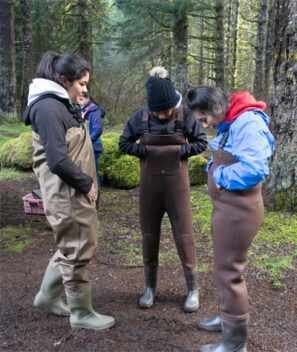
Adelante Mujeres provides holistic education and empowerment opportunities to Latina women and their families in Hillsboro, Forest Grove, and Beaverton. Their Chicas program, offered to girls in 3rd through 12th grade at 13 different schools, is the first program of its kind in Oregon and promotes leadership and serves up community service opportunities to over 425 local Latina youth and their families each year.
As we reached Lousignont Creek, a tributary of the Nehalem, the first order of business was gearing up for a wet hike. Thankfully, Charissa Jones from Tualatin Riverkeepers had brought waders for most of the girls, who took great glee trying to help each other into their suits. Volunteers from Patagonia Portland had also packed in boots for the girls. The rest of us had to rely on our own bogs and boots to get us across the river. Spare socks anyone?!
We split into two groups to forge different parts of the stream, one with fish expert and volunteer Ian Fergusson, and the other with North Coast State Forest Coalition’s Chris Smith. On the whole we saw two live spawning cohos shyly hugging a bank and two dead cohos up the banks, including a female who still had her eggs intact. This provided a great opportunity to talk about the salmon lifecycle and how each stage of the cycle and the corresponding habitat is critical to the survival of the species. The girls were enthusiastic to learn as much as possible about this cold-blooded near-neighbor of theirs, and they jumped at every chance to see these lessons demonstrated in nature. They forged waist-high ice cold waters and examined carcasses close-up. From a filleted female on the bank (a bear or raccoon had gotten to it), they pulled a few glowing orange eggs out to see them up close. No juveniles would spawn from these eggs, but some imagination had been given life.
Watch “Chicas and Coho Salmon” by Katie Sullivan, Essential Films & Photography.
They spied out redds (spawning nests or indentations in the gravel bed), and surveyed the landscape for other signs of life: Caddis fly! Slugs! Vole! They also made good use of GoPros and underwater cameras provided to help document their findings.
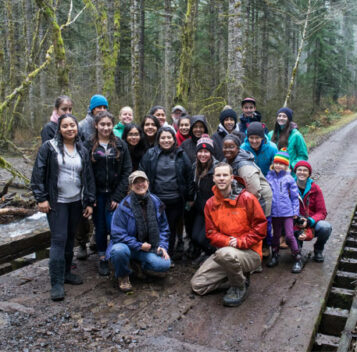
After our brief expeditions, we huddled back by the vans to share our finds, enjoy lunch, and some much needed hot chocolate. We ended the day with resolutions of making this trip again next year — next time with more waders and more hot chocolate!
Thank you to Patagonia and Elephants Delicatessen for providing provisions, Katie Sullivan and Tom Lange for capturing videos and photos, and for all the donors who contributed through the Oregon North Coast State Forest Coalition and the Willamette Week Give!Guide.
